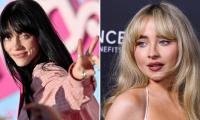LAHORE: While the residents of Karachi have long been praying for the revival of the lost glory of their city’s cultural grandeur and heritage, Premier Imran Khan is all set to perform the ground-breaking of the Rs24 billion Green Line Bus Rapid Transit project Friday (today) to the sheer delight of the Karachiites. However, the Green Line inauguration ceremony will be taking place after a lapse of nine previous deadlines since 2016. In order to cater the needs of at least 135,000 passengers daily, the project was conceived by former prime minister Nawaz Sharif exactly seven-and-a-half year ago on July 10, 2014 during a high-level meeting in Karachi to find a solution to the traffic muddles in the metropolis. Nawaz started the project in February 2016, approved Rs15 billion funding, but could not complete it in the stipulated one-year timeframe somehow.
A revisit to history shows that Karachi once had efficient circular railways and eye-catching trams, a sight that a couple of generations of this port city have not witnessed. Research shows that the idea of a tramway system for Karachi was conceived by the city’s municipal secretary and engineer, James Strachan, in 1881. The same year, a tender for its construction was first floated, and Edward Mathews of London had submitted the tender for building this tramway network.
On February 8, 1883, a plan for a tramway was drawn up, and in October 1884, construction on this project had actually commenced. Under the supervision of chief engineer, John Brunton, the Karachi tramway, with steam-powered cars, was inaugurated on April 20, 1885 near the St. Andrews Church (located on present day Abdullah Haroon Road and Shahrah-e-Liaquat intersection). The steam tramway, fired with coke, was replaced with a much-cheaper horse tramway a year later because Karachi’s residents were unhappy with the steam engines, as these vehicles were far too noisy for their liking.
Archives further reveal that coke had to be shipped from England at a great expense, which Karachi’s administration or citizens could not afford. The frequency of these steam trams was once every 15 minutes in busy areas and hence made the residents feel quite uneasy with the resultant noise pollution. In 1902, the East India Tramway Company Limited was formed with John Abbot as Chairman, and between 1909 and 1912, the horse trams were replaced with distinctive-looking petrol cars. There were 64 of these vehicles in service in 1955 when the company celebrated its 70th anniversary. The petrol trams continued in service until April 30, 1975.
As far as the Karachi Circular Railway (KCR) is concerned, it was fully operational between 1964 and 1994, but was abruptly shut-down in 1999 due to lack of financial and political backing chiefly. However, several restart attempts have been initiated since 2001.
The original KCR line extended from Karachi City station and culminated at Drigh Road station. It used to carry six million passengers, and at its peak, KCR operated 104 trains daily.
Of these, 80 trains used to run on the main line, while the remaining 24 trains would occupy the loop line. Instant success thus helped Pakistan Railways earn a healthy profit in its first year of operation. In November 2020, the KCR did partially revive operations on the orders of the Supreme Court. In May 2017, the federal government had approved Rs27.9 billion (US$170 million) restoration package for this project, but snags struck again, ultimately led to the cancellation of the funding.
In August 2020, the federal government again approved Rs10.5 billion (US$66 million) rehabilitation package for the KCR restoration. Only time will tell how quickly the complete restoration of the Karachi Circular Railways takes place.







